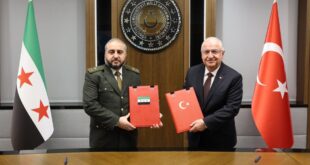 TEHRAN (FNA) Oil Minister Gholam Hossein Nozari here Tuesday said all new memoranda and contracts on gas export Iran had signed would take effect as of 2011.
TEHRAN (FNA) Oil Minister Gholam Hossein Nozari here Tuesday said all new memoranda and contracts on gas export Iran had signed would take effect as of 2011.
Nozari made the statement in an open session of the Islamic Consultative Assembly, during which the minister answered the questions posed by Rashid Jalali-Jafari and Javad Jahangirzadeh, representatives of Karaj and Urumieh respectively, a PIN report said.
“My attention to injection of gas into oilfields and export of gas is not less than the MPs’ heed,” he added.
Offering statistics, the oil minister said the major part of produced gas was consumed by the household and commercial sectors and no considerable volume was left to inject into low pressure oilfields and industrial sector, the two main gas consuming sectors that generated capital.
On Jan. 6, Iran awoke to heavy overnight snowfalls which forced schools to shut, blocked major roads, and led to the cancellation of domestic flights.
Schools were closed for six days in Tehran and most cities in the north of the country.
The authorities ordered all government offices closed on Jan. 6 and 7.
Tehran and several other cities in the north and center of Iran lie at altitudes of more than 1,000 meters (3,300 feet) above sea level and are regularly hit by heavy falls of snow in winter.
Cold weather has already created problems in Iran with around a dozen towns suffering gas cuts because of a surge in demand, a shortage compounded by a cut in exports from Turkmenistan.
Turkmenistan has halted daily deliveries of up to 23 million cubic meters to Iran since Dec. 31 because of technical problems and the need to undertake emergency repairs.
The incident has a feeling of deja vu. A year ago, Turkmen supplies were halted before an Iranian-Turkmen agreement was signed, stipulating that the price of Turkmen gas exports to Iran would increase and in exchange the volume of gas exported to Iran would double.
Iran can produce 440 million cu. m. of gas per day, with domestic consumption consisting of about 380 million cu. m., having increased from last year by 12 percent. Because of limitations on the production levels, around 20 million to 23 million cu. m. of gas were imported into Iran each day from Turkmenistan.
Iran imports about 5 percent of its domestic needs from Turkmenistan via the $190 million, 125 mile Korpezhe-Kurt Kui pipeline, built in 1997. Korpezhe-Kurt Kui’s capacity is almost 300 billion cubic feet per year.
Nozari warned Iran would stop buying Turkmen gas if its neighbor did not resume supplies.
Iranian officials say Ashgabat also sought a higher price for the natural gas it sent to its neighbor.
“Turkmenistan must first start supplying gas and then come to discuss (the price),” Nozari said here on Wednesday. “Otherwise we will announce that we don’t need Turkmen gas.”
In another part of his talks in parliament, Nozari said, “According to the plan, we had to produce 392 million cubic meters of gas in 2005 while we supplied 435 million cubic meters,” adding the targeted volume of gas in 2006 was 400 million cubic meters while 464 million cubic meters was produced.
Based on the plan, the number of new gas subscribers was to reach 750,000 in 2005 while the figure soared to 919,000 and it went beyond the targeted 690,000 in 2006 as the number of new clients touched 877,000, said the minister.
 Eurasia Press & News
Eurasia Press & News



